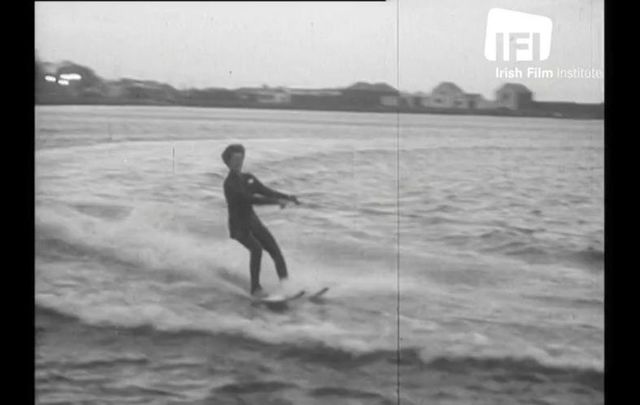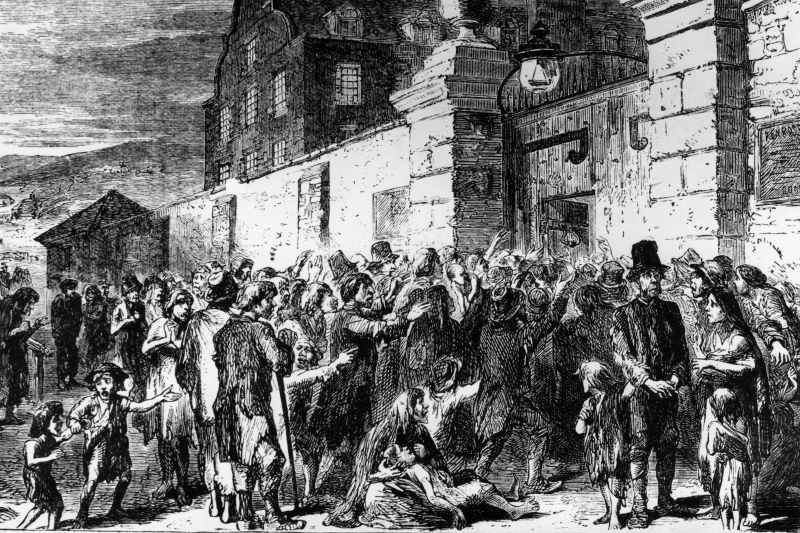What better way to spend Christmas Day than waterskiing in the freezing-cold Irish Sea?
In the short Gael Linn newsreel video "A Wet Christmas in Howth," Mr. and Mrs. Carr brave the cold waters at Balscadden Bay as onlookers, in awe of this chilly Christmas tradition, cheer them on. Howth and Martello Tower are just visible in the distance.
This traditional Christmas swim continues in Ireland today, with dippers braving the chilly waters (often for charitable purposes) from one end of the country to the other.
About Gael Linn and Amharc Éireann
Produced by Gael Linn, "A Wet Christmas in Howth" is part of Amharc Éireann (A View of Ireland), Ireland’s longest-running indigenous newsreel series.
Gael Linn was established in 1953 to promote the Irish language and culture. Co-founder and first manager, Riobard Mac Góráin, immediately realised the importance of promoting the language through entertainment and popular media. Gael Linn’s initial foray into production was the first regular indigenous cinema newsreel since the Irish Events series of the 1920s.
In 1955, Ernest Blythe, Chairman of Comdhail Naisiunta na Gaelige, lent Gael Linn £100 to produce a short film for cinema, and the Amharc Éireann (A View of Ireland) newsreel was born.
From 1956 to mid-1957, Amharc Éireann consisted of short, single-story items distributed to cinemas throughout the country on a monthly basis. Their popularity was immediate, and by mid-1957, Rank Film Distributors agreed to supply them to Irish cinemas along with their own newsreel, after which they were issued on a fortnightly basis.
By 1959, the success of this home-grown newsreel led to its weekly production, and it expanded to include four separate news stories. The series continued until 1964, when the immediacy of television as a means of relaying news to the Irish population rendered the newsreel obsolete.
Produced by Colm O’Laoghaire, a total of 267 editions of Amharc Éireann were made. Although Gael Linn’s Amharc Éireann production ceased in late 1964, its influence is ongoing. The range of Irish-interest subjects covered (from complex news stories to more magazine-like items) provides a vivid window into the development of modern Ireland at a particularly progressive point in its history and offers first-hand insight into the country's moral, cultural, and economic growth throughout the Whittaker and Lemass eras.
The video below is published with thanks to the Irish Film Institute (IFI), with whom IrishCentral has partnered up to bring you a taste of what their remarkable collection entails. You can find all IrishCentral articles and videos from the IFI here.
To watch more historic Irish footage, visit the IFI Player, the Irish Film Institute’s virtual viewing room, which provides audiences around the globe with free, instant access to Irish heritage preserved in the IFI Irish Film Archive. Irish Culture from the last century is reflected through documentaries, animation, adverts, amateur footage, feature films, and much more. You can also download the IFI Player Apps for free on iPhone, Android, Apple TV, Amazon Fire TV, and Roku.
IrishCentral has partnered up with the IFI to bring you a taste of what their remarkable collections entail. You can find all IrishCentral articles and videos from the IFI here.
* Originally published in 2020, updated in Dec 2025.




Comments